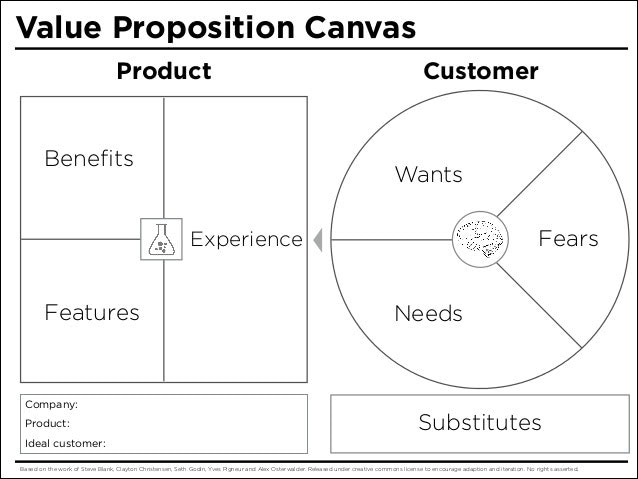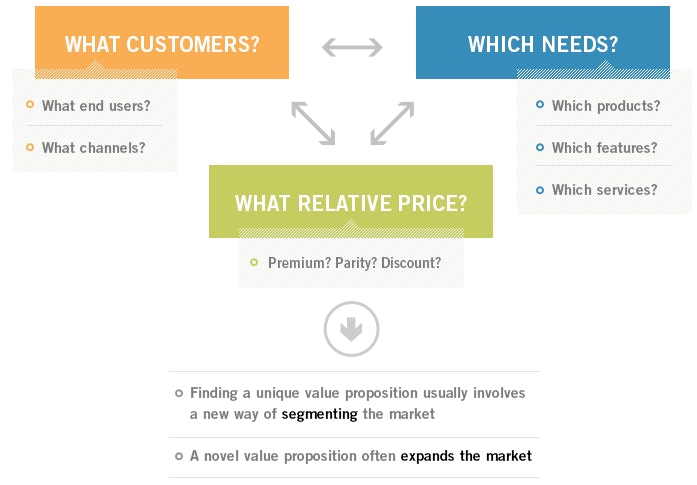Leaders often work tirelessly to improve their company’s product or service, thinking that it’s the most valuable role they can play. But for your business to “click” with your target audience, you need to stay just as close to your customers as you do to your offerings.
The details of customers’ needs and wants should be just as familiar to you as the features of your product or the details of the service that you provide. A value proposition serves as the bridge between these two aspects of your work. It’s a mantra that unites the two halves of the whole business.
We’ve demystified the nuts and bolts of how to write a value proposition, complete with examples, so you can ensure that all your hard work manifests in value for your customers every day.
Choosing the right customer support tool for you
Are you in the market for a new customer support tool, but don't know where to start? Download our free buyer's guide to choosing the right customer support tool.

What is a value proposition?
A value proposition is a simple statement that summarizes why a customer would choose your product or service. It communicates the clearest benefit that customers receive by giving you their business. Every value proposition should speak to a customer’s challenge and make the case for your company as the problem-solver.
A great value proposition may highlight what makes you different from competitors, but it should always focus on how customers define your value. Likewise, conversations around brand strategy and taglines should stem from a value proposition, but they aren’t one and the same.
You may be wondering: Why bother learning how to write a value proposition? It’s like investing in the foundation of a house. You may not see the foundation, but everything you do see — and the long-term safety and security of your home — rest on it having a strong place to start from.
How to write a value proposition: 3 options
If you’re intentional about creating a value proposition, it can help clarify the way forward for your entire company. However, including too many voices early on can water down your intent in an effort to make everyone happy, and, ironically, the results won’t work for anyone.
Rather than get everyone involved, start with a small group of people (no more than three) who can set aside the time to hone a few compelling options.
Here’s how to write a value proposition three different ways, from complex mapping to a simple formula. Start with one or try all three in a workshop to refine your ideas with greater precision.
1. Map out a value proposition canvas
Peter Thomson’s value proposition canvas explores the different components of a company that contribute to a strong value proposition. Thomson believes that a process like this can help team members get to “minimum viable clarity,” which can be whittled down into a one-sentence value proposition.
Thomson calls a value proposition “a crunch point between business strategy and brand strategy,” and he created a model that syncs the two strategies. There are seven areas to explore, each of which takes up a section in the map:

When you explore each section of the canvas, do so from the perspective of the customer. While writing out the benefits of your product, imagine how it increases pleasure or decreases pain for the person using it. Approach the features and the experience that way, too: How do the features make the customer’s life better? How does the product experience make a customer feel?
Next, you’ll dive into the customer’s wants (emotional drivers), needs (rational motivators), and fears (undesired outcomes). Remember that even when consumers are making purchases or investments on behalf of a company, they can still be guided by emotions.
In particular, try to understand whether a product or service affects a buyer’s perceived likelihood of failure, their anxiety, or their reputation at work. You can use Bain & Company’s 30 “Elements of Value” and its B2B counterparts as a roadmap for articulating the ways your company gives the customer value within this context.
2. Ask Harvard Business School’s essential questions
Harvard Business School’s Institute for Strategy & Competitiveness simplified how to write a value proposition with just three prompts. Just as Thomson does, Harvard argues that a value proposition serves as the connection between a company and its customers:
“While the value chain focuses internally on operations, the value proposition is the element of strategy that looks outward at customers, at the demand side of the business. Strategy is fundamentally integrative, bringing the demand and supply sides together.”
To create an integrated, cohesive value proposition, start by brainstorming as a group around these three questions:
Which customers are you going to serve?
Which needs are you going to meet?
What relative price will provide acceptable value for customers and acceptable profitability for the customer?
Depending on your product and service, it may make sense for you to start with the first or second question in the list. Together, all three create a triangle that can lead you closer to a succinct value proposition.
As you move through the exercise, consider which one is the primary “leg” of the triangle. For example, is the greatest value that you offer in cost savings? Or is it that you’re offering a better product or experience at a premium?
Also, think about whether your company is expanding the market by meeting a need that hasn’t been realized. Harvard’s experts use a great example — the iPad. Apple created a new demand that hadn’t existed before the technology hit the market.
3. Try the Steve Blank formula to distill your insights
Steve Blank, a former Google employee who runs the Lean Startup Circle, noticed that many startup founders emphasize features instead of benefits when they try to transform more detailed insights into a succinct value proposition. Instead of summarizing how a company offers value to customers, leaders often get stuck in the weeds.
Blank saw the need for a simple formula to transform a brainstorm into a simple sentence. We love distilling more detailed insights with his method:
We help (X) do (Y) by doing (Z).
Use Blank's intuitive template to come up with your own value proposition. Remember that the first thing that comes to mind may be the best. Your gut instinct could be spot on here, and that’s what makes this simple solution so valuable.
Here’s my value proposition for my copywriting business, for example:
I help marketing teams to resonate with their target audiences by communicating with clarity and compassion.
Your local coffee shop may have a value proposition that’s similar to this one:
We help our local customers to feel good and do good by fueling them up with artisanal coffee in a community-focused space.
Although you may have brainstormed as a group with the other two methods, this time, ask team members to complete this exercise individually. Comparing and contrasting answers afterward can yield helpful insights about each person’s priorities.
Most importantly, as you draft your value proposition, use the language your customers use. At Help Scout, we say things like “emails slipping through the cracks,” because that’s what our customers say about the problem we help solve. If you don’t write your value proposition the way your customers would write it, there will be a big gap between what you say and what they hear. When you use their voice, you cut through the noise.
6 value proposition examples
Beyond grasping how to write a value proposition, it helps to see how a strong statement influences and infuses a company’s strategy. Because value proposition examples aren’t necessarily the same thing as brand copywriting, we don’t have access to the exact words a company uses internally.
However, if a company does a great job situating their value proposition within the market, you can tell because their message resonates far and wide. Here are six modern value proposition examples that will help you to understand how value propositions can help you break into a market or create a new one.
1. Slack
Slack is a collaboration tool for teams with a simple, easy-to-use platform and instant message capability. The platform is equally beloved by enterprise teams and scrappy startups for its ability to keep work flowing, no matter the everyday barriers or the complexity of a project.
Everything that the company does hinges on their value proposition: Slack saves time by tearing down communication and systems silos. Their product aspires to take the pain out of working together online — and maybe even make it fun. That’s something no other product has tried or claimed to do.
Because they’ve built such a powerful value proposition, Slack is perceived as an enjoyable alternative to the dreaded email inbox and other tools. Their approach works. Slack is the fastest-growing SaaS startup ever, and it’s used by 77% of Fortune 500 companies.
Despite this legendary growth, Slack famously said it was a business with a pared-down sales team, which is only possible because of the foundation they set with a formidable value proposition.
2. Bloom & Wild
Bloom & Wild is an online flower delivery company that simplifies the process of ordering and receiving luxury flowers. Aron Gelbard, founder and CEO, explained their value proposition in their 2017 funding announcement: “We’re enabling [our customers) to order flowers and gifts from the palm of their hand with better product, designs and payments.”
Bloom & Wild makes it possible for customers to deliver flowers in under a minute using their smartphone or computer; going from thought to action is almost instantaneous. As Gelbard says, “Our mission is to make sending and receiving flowers a joy, using technology to turn emotions into an action in the simplest and most beautiful way possible.”
The flowers are just as simple to receive. They’re packed in flat boxes so they can be delivered through letterboxes (or mailboxes) so there’s no need for someone to be on hand to receive them, and they’re sent as closed flower buds for a longer bloom.
While many companies deliver flowers, Bloom & Wild differentiates itself by offering a smooth customer experience for everyone, as well as competitive pricing, with significantly cheaper blooms than average.
Bloom & Wild communicates its value proposition so clearly that its customers perform much of the hard task of marketing for them through word-of-mouth referrals.
3. Airbnb
When Airbnb began to disrupt the hospitality industry, it needed to market to two separate groups: guests who wanted a place to stay and hosts who wanted to rent out their spaces. Their two-in-one value proposition: Travelers benefit from a truly local experience and hosts benefit from extra income.
In their own words, “Airbnb exists to create a world where anyone can belong anywhere, providing healthy travel that is local, authentic, diverse, inclusive and sustainable.”
Their rooms often have more character than hotels, and they’re usually located in neighborhoods people live in. Guests learn from local knowledge shared by hosts and feel at home wherever they go. These different sources of value wrap together into Airbnb’s tagline: Belong Anywhere.
As a business goes through different stages of growth, its value proposition is likely to change, too. Originally marketed as much cheaper than staying in a hotel, Airbnb has now become an experience-driven, mainstream staple with a premium wing called “Airbnb Plus,” with its own value proposition.
4. Fjällräven
The classic Swedish outdoor clothing and equipment company Fjällräven was founded by Åke Nordin in 1960. He designed functional (and warm) products for professional researchers taking expeditions into northern Scandinavia.
Now, the 60-year-old brand is experiencing a resurgence amongst younger generations across Europe and North America. Their core proposition is that they sell high-quality, sustainably made products that balance form and function. Yes, customers look great wearing their backpacks and they can still hike up a mountain in the middle of winter.
Their commitment to sustainable business practices appeals to the same conscious consumers who value the outdoors, which fortifies their value proposition. Fjällräven manufactures many of its own products using its own G-1000 material, as well as its own Greenland Wax, contributing to its value proposition of offering quality and durability.
Because they “craft products for a lifetime of memories,” customers are more than willing to pay their premium prices.
5. Juniper Print Shop
When Jenny Komenda launched her first blog, Little Green Notebook, in 2007, she was a young designer sharing her DIY projects with the world. An entrepreneur at heart, Komenda evolved her skillset and online following into another award-winning blog, Juniper Home, and its beloved counterpart, Juniper Print Shop.
Komenda built a cohesive brand that championed affordable design and spoke to a key value proposition that motivated her customers: helping non-designers create a beautiful home without breaking the bank.
Her content answers this question in thousands of different ways, and the new arm of her business offers a simple fix for finding affordable art — one of the most difficult challenges along the way. She launched a print shop featuring the work of women artists and photographers with simple digital downloads and physical prints that are cost-effective and easy to install.
Juniper’s value proposition comes to life in the details of the print shop — from links to affordable IKEA frames — and Jenny’s one-of-a-kind suggestions (buy a vintage frame, invest in a custom mat).
6. Found My Animal
Found My Animal is a company for rescue dogs and their owners. In 2006, Bethany Obrecht and Anna Conway met by coincidence — they both had rescue dogs named Walter, and they quickly became friends.
Their shared interest in crafts (and a fisherman relative) led the two dog moms to design and create leashes from nautical rope that withstand hundreds of pounds of pull. Each leash has a brass tag with the word “FOUND” written on it in simple font.
The company has since expanded their product lines to include other dog accessories and supplies like dog beds, totes, and toys.
Found My Animal’s value proposition is simple: Support a company that donates a portion of its profits to animal rescue groups by outfitting your own rescue in quality products. The company has given money (and leashes) to over 64 nonprofit organizations that help abandoned or neglected pets, so customers know their purchases are making a difference.
This value proposition is baked into every aspect of Found My Animal, especially their marketing. Their team features rescue dogs in need of homes front and center on their website and their social media accounts. Plus, their social media tag #foundmyanimal brings awareness to animal adoption.
They even launched The Rescue Orange Project: A buy-one-donate-one leash program. For dog owners who are as devoted to rescuing other pups as they are to their own, buying from this company is a no-brainer.
The best value propositions evolve with your customers
Now that you can answer the question “What is a value proposition?” a few different ways, you’re ready to get to work. Even if you already have a value proposition in place, consider carving out the time to revisit it.
As customers and markets change over time, your company should evolve as well. Rather than make assumptions about your community based on their past needs and buying behaviors, create feedback loops so you’re always in the know.
By listening to customers in real time, you set your company up to evolve its value proposition and meet the needs of your community as it grows.







